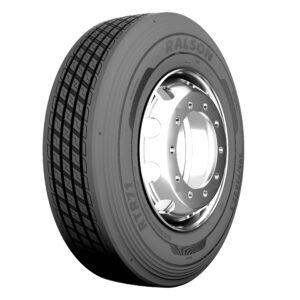The combination of high and rising costs plus pressure on revenue means trucking fleets can’t afford to let any controllable expense get out of hand. Tires are one of those controllables.
Given the pressures above, tire costs deserve special attention. Here’s why:
Because “hard” costs like fuel, insurance and driver wages might be harder to reduce dramatically, if at all, tire cost becomes a lever that fleets can influence (specification, maintenance, retread strategy). In today’s low-margin environment, improving cost per mile by even a few cents adds up.
What fleets should look for in their tires
Here are the key factors to consider, based on application, environment and overall cost-of-ownership.
Match the tire to the application — Understand what the truck/trailer is used for: long-haul vs regional vs urban/stop-and-go; highway vs mixed vs off-road. If a line-haul tire is selected for an urban environment, it likely will not hold up to the stop-and-go, high-turning, scrubbing and road hazards that are typical in that environment.
Choose tires designed for that usage — e.g., steer vs drive vs trailer positions — each have different demands. Consider load, speed, geography (weather, road conditions) and service (haul length, turns, scrubs, curbing) when specifying.
For example, the Ralson RTR71, designed for the trailer axle, features a chamfered solid shoulder that counters lateral forces in high scrub applications for even shoulder wear. Its wide 4-belt package provides uniform ground contact for excellent impact absorption and casing retreadability.
Key tire performance attributes to evaluate — Fleets should evaluate tires based on a “performance triangle” (roughly: durability/miles, fuel efficiency, traction/handling) and then pick the right balance:
- Wear life / miles to removal: How many miles you can get from the tire before it must be replaced.
- Rolling resistance / fuel efficiency: Tires that resist rolling less require less energy/fuel — the fuel savings can be meaningful. Ralson tires that are SmartWay verified: RMR51, RDR52, RDR55 and RTR51. A SmartWay tire has been certified by the U.S. Environmental Protection Agency (EPA) for meeting specific fuel efficiency and environmental performance standards.
- Traction / safety / wet/dry performance: Especially important for drive/steer positions and in challenging conditions.
- Durability / casing quality /retreadability: If you can use a casing for multiple retreads, you lower cost per mile.
- Load capacity / sidewall strength / resistance to damage: For heavy loads, uneven roads, curbing etc.
- Application-specific: scrub/curb resistance: Especially for regional/urban, where tires get frequent turns, stops, curbs.
The Ralson RDR55 open shoulder drive tire checks off the boxes:
- Integrated blocks with tie bars and notches offer enhanced block rigidity, excellent traction, and low rolling resistance while providing uniform wear throughout the tire thread life.
- Sipes provide initial traction and improved heat dissipation assisting with initial wear and improved grip.
- Its open shoulder with tie bars provides powerful traction and self-cleaning capabilities while improving tread and casing life.
- Optimized groove angles with stone ejectors offer self-cleaning and ease stone ejection while improving tread and casing life.
At the end of the day, fleets and owner operators must consider their tire total cost of ownership (TCO) — not just purchase price. Don’t assume that you will lower your tire operating costs by buying the least expensive or the most expensive product. Focus on cost per mile and use data such as miles, removals, repairs and retreads to determine the tire brands delivering a lower total cost of ownership. This is where Ralson TBR tires (manufactured in one of the world’s most advanced TBR plants and designed for North American roads and highways) shine!



